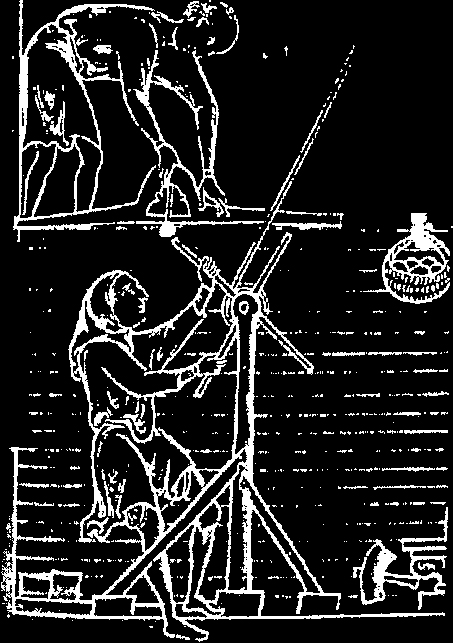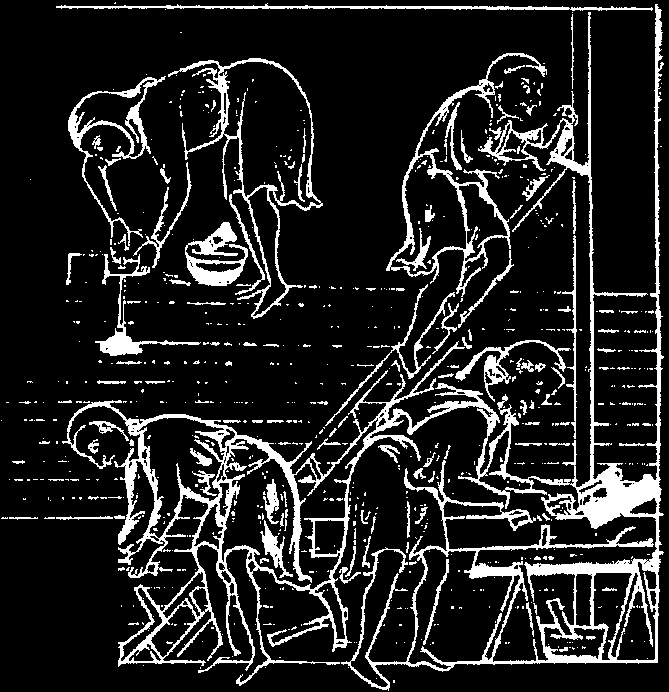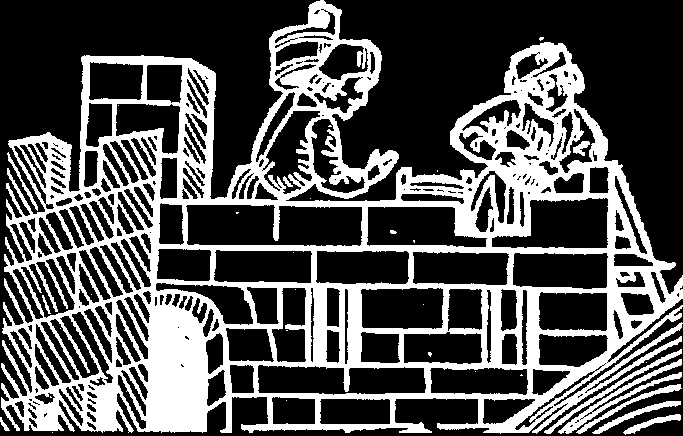Why the Mark?
Opinions about the Mark differ widely. Some senior brethren are most enthusiastic about it.
Others do not fully understand it.
For many of us the Mark is the essence of Freemasonry because of the particularly close brotherhood it engenders, but one must acknowledge that there are horses for courses.
“When I joined the Mark Degree,” recalls one brother. “I had been in the Craft for some 15 years. In my Craft lodge there was a particular brother who had joined some ten years before me and I had never seen him in lodge. Yet he was an office bearer in the Mark and never missed a meeting and, as far as I could gather, his whole Masonic life was in the Mark Degree.”
We do not all like the same things and It Is logical that we may prefer different ways to practise our masonry. We must therefore expect brethren to find certain degrees more congenial and satisfying than others.
It follows that all the ‘additional’ degrees are important. They considerably expand the range of interest for devoted masons because of their different characteristics. They provide a rich tapestry of varying intellectual and moral interests. Yet they all reinforce the basic Masonic theme of the Brotherhood of Man under the Fatherhood of God.
It must be acknowledged that many worthy masons would be bored to death if Freemasonry were restricted to the three Craft Degrees and the Royal Arch. Brethren who lose interest and fall by the wayside would perhaps remain in our ranks if they were encouraged to join the other degrees.
Criteria for Judgement
In deciding whether the Mark has anything to offer, we should examine several questions:
- Does it have a defined place in the broad structure of Masonic legend and teaching?
- If so, is that message worthy of serious consideration?
- Are its ritual and ceremony sufficiently dignified and stately?
- Does it have any special features that merit attention?
Underlying these specific questions is the general question of why the Mark should occasionally be disparaged or even dismissed as trifling by brethren who should know better.

Place in the Structure
The Mark, along with the Craft and the Royal Arch, can definitely be seen as one of the central family of Masonic orders.
Why?
Because the three orders share certain family characteristics. viz:
- They are all based on the legend of the building of King Solomon’s Temple.
- They are not confined to members of any religious denomination.
- The respective Grand Masters of the orders, The Duke of Kent and Prince Michael of Kent, are brothers.
In the past the same man has sometimes led all three orders (e.g. Albert Edward, Prince of Wales later King Edward VII – and his younger brother Arthur, HRH the Duke of Connaught, and their nephew George, HRH the Duke of Kent, father of the present Grand Masters of the Craft and Mark).
The Pro, Deputy and Assistant Grand Masters of the Mark are invariably senior Provincial Grand Masters in the Craft. Prince Michael is the Provincial Grand Master for Middlesex.
- There is close liaison and contact between the administrations of the orders.
For example, the Quarterly Communications of the Grand Lodge of Mark Master Masons are generally held the day before those of the Craft.
- There are close parallels in the structure of the ceremonies and rituals with interesting echoes in each (e.g. the Chair working in the Craft has some fascinating connections with the Mark).
Meaning and symbolism in the orders are intimately interwoven.
One senior mason expressed what is perhaps a common reason for the popularity of the Mark: “I love the Mark,” he said, “because it is far more like the Craft than any other additional degree.”
- In all other constitutions, the Mark Degree is actually an Integral part of the Royal Arch and in the Scottish Constitution, pure and ancient Freemasonry is defined as consisting of “the Entered Apprentice Degree, the Fellowcraft Degree, including the Mark Masons’ Degree, and the Master Masons’ Degree, including the Holy Royal Arch”.
The Mark Degree in the English Constitution is unique in that it is a fully fledged order with its own Grand Lodge, the Grand Lodge of Mark Master Masons of England and Wales and its Districts and Lodges Overseas.
This has allowed it to develop its own special characteristics and strengths.
It has its own magnificent headquarters at Mark Masons’ Hall, St James Street and its own substantial Benevolent Fund. Its staff has for many years administered almost all the additional Masonic degrees in the EC other than the Rose Croix.
It therefore has more to offer than the Mark in our four sister constitutions in South Africa and it is not surprising that many brethren from these constitutions choose to join our Mark.
As is all too frequently said, the concordance as defined at Union in 1813 determined that “pure Ancient Masonry consists of three degrees and no more. viz. the Entered Apprentice. the Fellowcraft and the Master Mason, including the Supreme Order of Holy Royal Arch “.
This prevented the brethren of Grand Lodge in 1856 from incorporating or recognising the Mark Degree as part of Craft Freemasonry and even now stands in the way of a more intimate alliance.
- Although in constitutional terms an additional degree, the place of the Mark in the hierarchy of degrees can be determined by remembering that the Entered Apprentice Degree in Craft masonry is an Initiation Ceremony, while the second and third degrees together with the Royal Arch follow the Solomonic Legend.
The Mark Degree fits most appropriately into the Solomonic Legend and, in this sense, can be seen as a valuable and relevant extension of Craft masonry.
The relationship between Craft and Mark was expressed most aptly by MW Bro Lord Ampthill, sometime Pro Grand Master of the Craft and a Grand Lodge Officer of the Mark, at a meeting of the Mark Grand Lodge some years ago:
“I cannot help remembering that every single brother present is a member of the United Grand Lodge of England. After all, the Craft and Mark are partners in the great enterprise and association of English Masonry.
“They have no rivalries, only generous emulation; they help and support one another; they have no conflicting interests; in short, they both work together for the same great cause.”

Speculatives
The moral message of the Mark Degree is a Biblical text: “The stone which the builders refused is become the head stone of the corner.” This is also the Latin motto on the arms of Grand Lodge:
“Lapis reprobatus caput anguli.”
So important is its enduring message of hope that the statement is found no fewer than three times in the Bible (in Psalm 118.22; the Gospel according to St Matthew, 21.43: and the Gospel according to St Mark, 12.10). The Gospel references are part of Christ’s parable of the vineyard delivered to the chief priests, scribes and elders shortly before His crucifixion. In the parable He obliquely likens Himself to the rejected stone.
Can you think of another Masonic message that can be summarised in a brief, crisp text so packed with meaning that it forms the theme of a parable?
The surface meaning is straightforward, yet its suggestions and implications are there to be explored by a little philosophic probing.
As we have already suggested, the primary underlying message is one of hope. Spurned by your fellows, rejected by the world, you can yet hope for your due reward at Judgement Day. You do so, secure in the faith that God who “seeth not as man seeth (p77, Lecture on the Tracing Board) and is the embodiment of infinite Charity, will judge you according to the true value of your work.
The degree inculcates moral courage, the will to continue steadfastly to do what you know is right despite the attacks or scorn of others. Thus it teaches you to have faith in yourself while at the same time placing a healthy reliance on others (“ … among Mark Master Masons you will ever find friends”).
This implies that you observe certain standards. If your life is to be made in to a perfect “living stone” fit for the highest use it must first be tested against your own standards and against the square of the GOOTU.
There are other interwoven strands – lessons of humility, of patience adversity, of self-discipline, of mutual dependence and charity. They are all there for you to unravel. At least this much should be clear to you: it is ridiculous to suggest that Mark Masonry carries no intellectual or spiritual weight.
Ritual and Ceremony
The lessons of the Mark Degree are presented in a ceremony that is both lively and enjoyable. It requires active participation by at least nine officers and is full of action and surprises.
The ceremony requires wholehearted commitment from the officers if it is to be convincing.
Perhaps that is why a good Advancement in the Mark creates a sense of special joy and warmth in the participants.
The simple and direct language of the ritual perfectly matches the clarity of the central teaching of the degree.
There is no obscure, far-fetched symbolism or elaborate, inflated rhetoric. The words are to be savoured for their unadorned dignity. They are entirely appropriate for this unpretentious yet fascinating degree.

Special Characteristics
The Mark is universally known as the “friendly degree”. Perhaps, because the message is conveyed in a relatively light-hearted way through a ceremony that is entertaining as well as instructive. Perhaps also because of the need for wholehearted participation, as already mentioned.
Its devotees certainly recognise a particularly pleasing flavour in the Mark and value it for itself. For the adventurous Masonic voyager it has added attractions. It opens the door on further Orders which require membership of the Mark. These are the Ancient and Honourable Fraternity of Royal Ark Mariners, the Order of Royal and Select Masters and the Order of the Allied Masonic Degrees.
The Royal Ark Mariner, a fascinating, compact degree, has close affinities with the Craft – which is not surprising when you consider that the legend of Noah and the First Covenant was part of the earliest development of Craft ritual. (Early masons were known as Noachites). The only remnants of the Noah legend in modern Craft masonry are the Deacons’ Wands. Royal Ark Mariner lodges have, in terms of the Constitutions, to be attached to Mark Lodges.
The Order of the Allied Masonic Degrees is a most interesting cluster of five degrees – St Lawrence the Martyr, Knight of Constantinople, Red Cross of Babylon, Grand Tilers of Solomon and the Order of Grand High Priest.
The Order of Royal and Select Masters, popularly known as the “Cryptic”, comprises four degrees each of which, from the Mark onwards, leads logically to the next and so on in succession until we arrive at the Supreme degree of the Holy Royal Arch. They are a useful and interesting addition to the Craft and Mark and contribute in particular to a better understanding of the Royal Arch.
Summary and Conclusion
We seem to have covered only the pleasures and virtues of Mark masonry, and you may well ask: “Why the negative perceptions?”
The reason is almost certainly to be found in the quality of performance of the ceremony which can be excellent or abysmal, though it is usually somewhere between.
The Mark is something like a violin: well played it is sublime, badly played it is excruciating.
Lulled by the easy friendliness of the Mark you may be tempted not to take the working seriously. That is fatal. The paradox of the Mark is that it requires discipline and thorough preparation if you are to perform it briskly and convincingly. All too often – though we hope this is being relegated to the past – officers fail to learn the ritual. They bumble through or, worse, insult the candidate by reading the ceremony. Who could truthfully show any regard for an order he has entered in these circumstances?
Dedication and effort are as essential for the image and welfare of Mark Masonry as they are for any other endeavour. We know that you will render this wonderful Order its due.
If you are already a Mark Mason, we hope that this little paper will enhance your enjoyment of the Degree and clarify some issues which may arise in discussion. If you are not already a Mark Mason, you ought to be. We hope we have inspired you to savour the delights of a new Masonic experience.